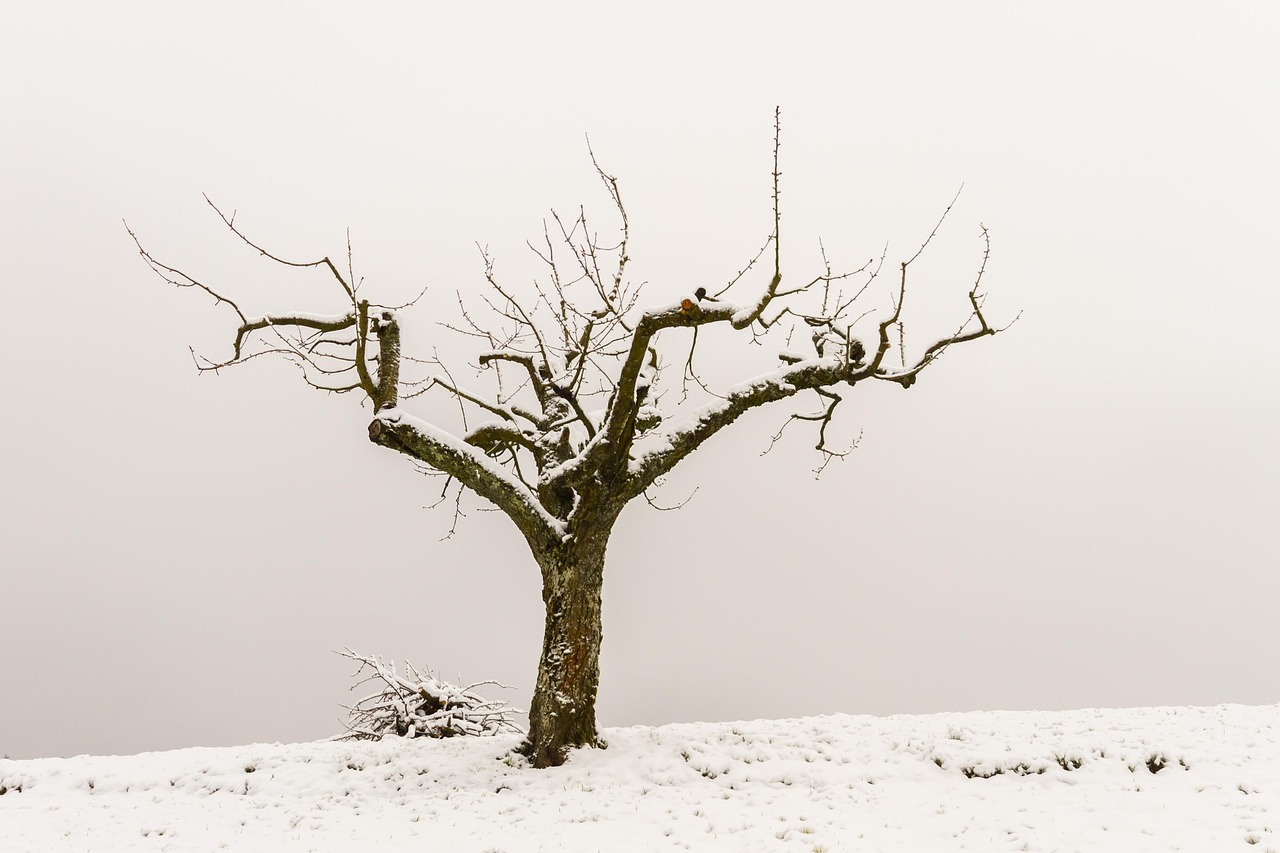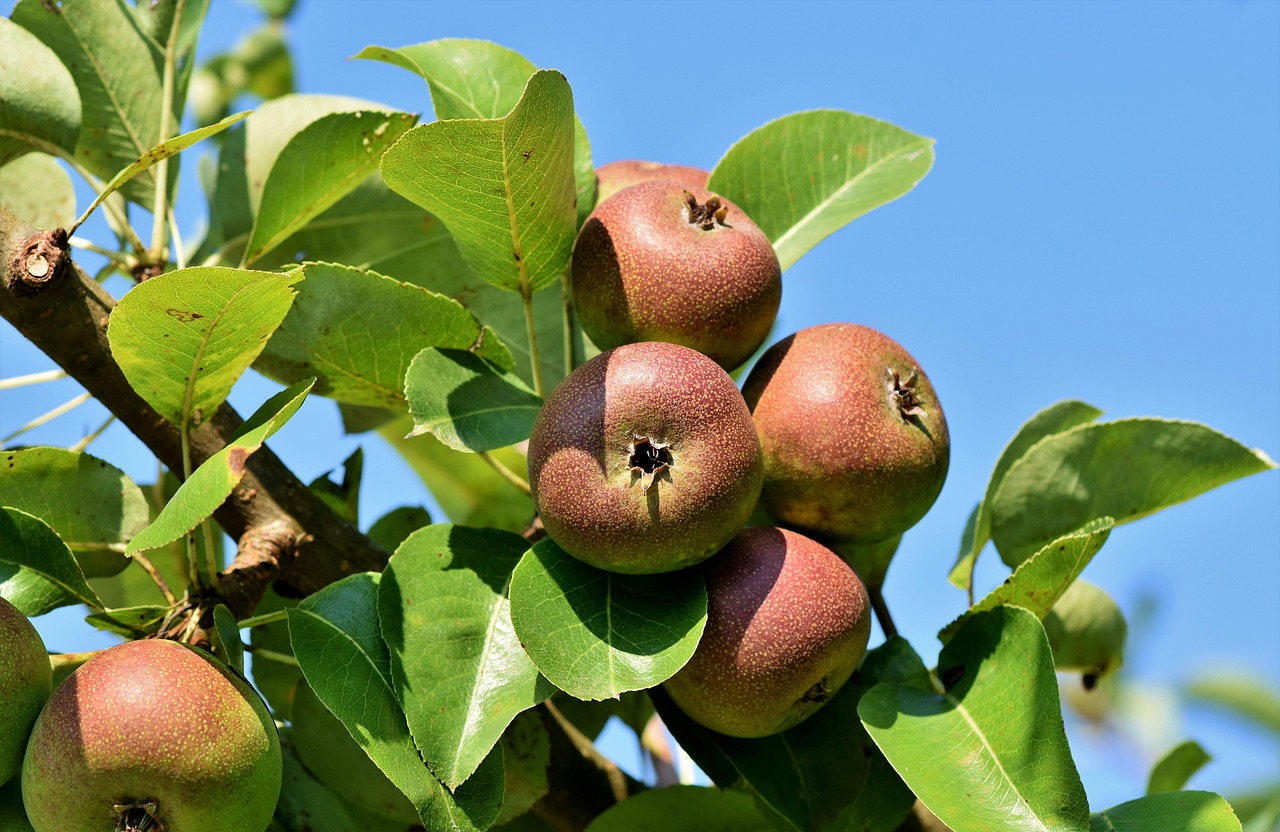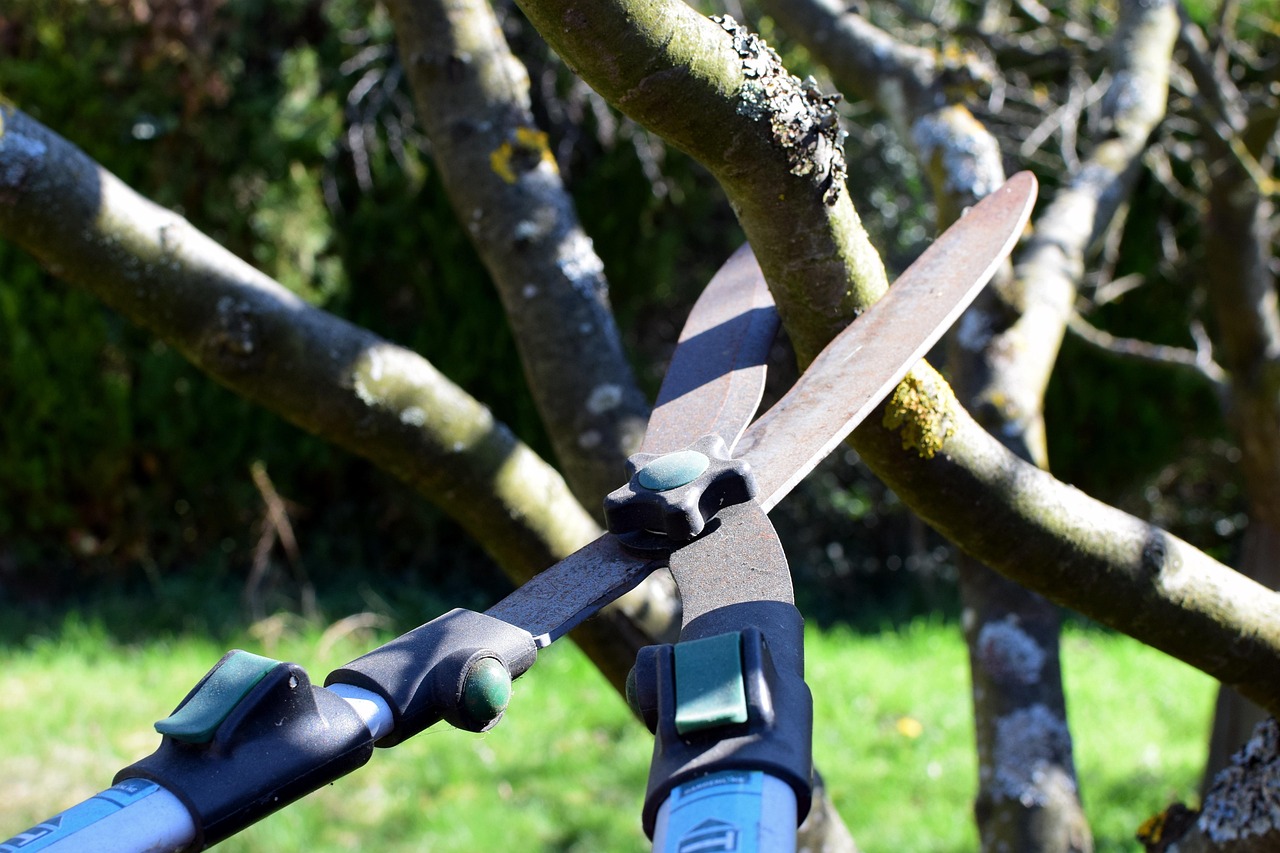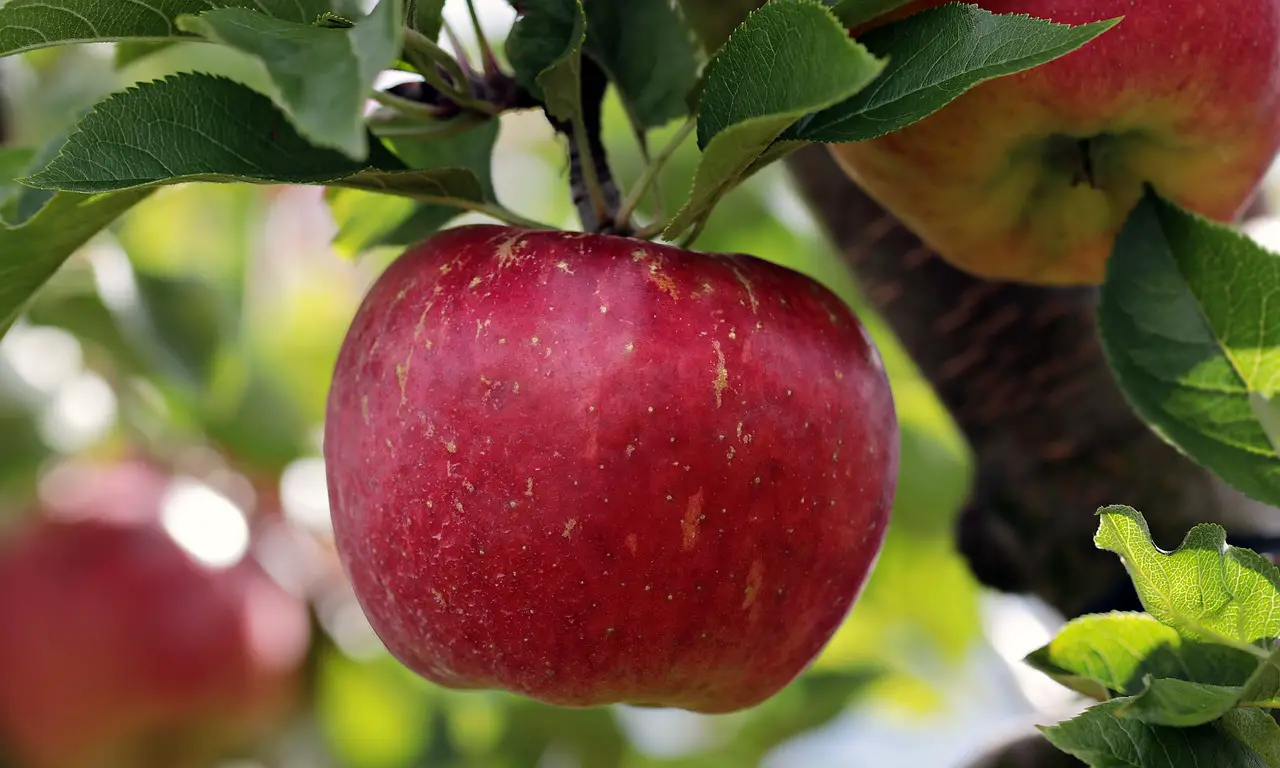Pruning young apple trees is vital for fostering robust growth and maximizing fruit production. It strengthens branch structure, enhances sunlight exposure, and boosts airflow, contributing to overall tree health. Implementing proper pruning techniques in the early years is essential for developing resilient trees, ultimately leading to abundant and healthy apple harvests.
Apple trees are a beloved staple in many gardens and orchards. They provide not only beautiful blossoms in spring but also delicious fruit in the fall. However, to ensure that these trees thrive, especially in their early years, proper care is necessary. One of the most critical aspects of this care is pruning. Pruning young apple trees helps shape their growth, supports healthy development, and increases their resilience against diseases and pests.

When done correctly, pruning can lead to a well-structured tree that maximizes sunlight exposure and air circulation. This is particularly important for young trees, as they are still establishing their root systems and overall structure. Understanding how to prune these trees effectively can make a significant difference in their long-term health and productivity.
Understanding the Basics of Pruning
Before diving into the specifics of pruning young apple trees, it’s essential to grasp some basic principles. Pruning involves the removal of specific parts of a plant to encourage healthy growth. This can include cutting branches, removing dead or diseased wood, and shaping the tree.
There are several reasons why pruning is beneficial:

- Shape Formation: Pruning helps form a strong framework for the tree, making it easier to support fruit as it grows.
- Health Improvement: Removing dead or diseased wood prevents the spread of disease.
- Better Airflow: Increased airflow reduces humidity around the foliage, preventing fungal diseases.
- Sunlight Exposure: Properly spaced branches allow more light to reach the leaves, enhancing photosynthesis.
By applying these principles, gardeners can ensure their young apple trees develop into robust and productive plants.
Key Factors in Young Apple Tree Pruning
Several factors influence how and when to prune young apple trees. Understanding these factors can help ensure that pruning is done effectively.
| Factor | Importance |
|---|---|
| Tree Age | Younger trees require different techniques compared to mature trees. |
| Season | Pruning during dormancy (late winter) is typically best for young apple trees. |
| Tree Variety | Different apple varieties may respond differently to pruning methods. |
| Local Climate | Weather conditions can affect growth patterns and pruning timing. |
The age of the tree plays a crucial role in determining how much and what type of pruning is necessary. Younger trees generally need less aggressive pruning than older, more established ones. Additionally, the season in which pruning occurs can greatly affect the tree’s health. Late winter is often recommended as it allows the tree to heal before new growth begins in spring.

The variety of apple tree also matters. Some varieties are more vigorous than others and may require different approaches to pruning. Furthermore, local climate conditions can influence the best practices for your area. It’s essential to consider these factors when planning your pruning strategy.
The Pruning Process for Young Apple Trees
The process of pruning young apple trees involves several steps. It is important to approach this task with care and precision. Here are some general guidelines to follow:
- Assess the Tree: Look at the overall structure and health of the tree before making any cuts.
- Remove Dead or Diseased Wood: Start by cutting away any branches that appear unhealthy or damaged.
- Thin Out Crowded Branches: If branches are too close together, remove some to improve airflow and light penetration.
- Shape the Tree: Focus on creating an open center structure that allows sunlight to reach all parts of the tree.
- Make Clean Cuts: Use sharp tools to make clean cuts, which helps the tree heal faster.
This process helps ensure that young apple trees develop strong structures that will support fruit production in the future. Each step contributes to promoting healthy growth patterns and developing a resilient tree capable of thriving in various conditions.

In summary, young apple tree pruning is a vital practice for ensuring strong growth and healthy fruit production. Understanding the basics, key factors, and specific processes involved in pruning can significantly impact the success of your apple trees as they mature.
Timing Your Pruning
Timing is a crucial element when it comes to pruning young apple trees. The right timing can influence not only the healing process but also the overall growth and fruit production of the tree. Understanding when to prune can help ensure that you achieve the best results.
Pruning should generally be done during the tree’s dormant season, which typically falls in late winter to early spring before new growth begins. However, factors such as local climate and specific apple varieties can affect the exact timing. Here are some considerations for determining the best time to prune:
- Local Climate: In warmer climates, trees may begin their growing season earlier. Therefore, pruning should be completed before the first buds appear.
- Tree Age: Younger trees may benefit more from early spring pruning, while older trees can be pruned in late winter.
- Weather Conditions: Avoid pruning during wet or extremely cold conditions, as this can stress the tree and lead to disease.
Tools Needed for Pruning
Having the right tools is essential for effective pruning. The following tools are recommended for pruning young apple trees:
- Pruning Shears: Hand-held shears for cutting small branches and twigs.
- Loppers: Larger tools for cutting thicker branches that are too big for pruning shears.
- Saw: A small pruning saw for cutting larger branches with precision.
- Gloves: Protect your hands while working with tools and handling branches.
- Ladder: If necessary, to reach higher branches safely.
Make sure to keep your tools clean and sharp. This not only ensures cleaner cuts but also reduces the risk of spreading disease among trees.
Common Pruning Techniques
There are several techniques used when pruning young apple trees. Each technique serves a different purpose and contributes to the overall health of the tree. Here are some common methods:
- Heading Cuts: This technique involves cutting back a branch to a bud. It encourages bushier growth and is often used on young trees to stimulate lateral branching.
- Thinning Cuts: Removing entire branches at their base opens up the tree’s canopy, improving light penetration and air circulation.
- Pinching: For very young trees, pinching off new growth can encourage branching and denser foliage.
- Renewal Pruning: For more established young trees, this method involves removing older branches to promote new growth and maintain vigor.
Understanding when and how to apply these techniques is key to developing a healthy apple tree capable of producing abundant fruit.
Avoiding Common Mistakes
Pruining can be daunting, especially for beginners. However, avoiding some common mistakes can lead to better outcomes for your young apple trees. Here are several pitfalls to watch out for:
- Over-pruning: Removing too much foliage can stress the tree and reduce its ability to produce energy through photosynthesis.
- Incorrect Cuts: Making cuts too close to the trunk or leaving stubs can harm the tree and create entry points for disease.
- Poor Timing: Pruning at the wrong time of year can negatively impact growth and fruiting.
- Lack of Planning: Failing to assess the tree’s structure before pruning can lead to uneven growth and poor form.
A thoughtful approach to pruning will help you avoid these mistakes and foster healthier growth in your apple trees.
The Role of Fertilization After Pruning
After pruning, it’s important to support your young apple trees with adequate nutrition. Fertilization helps promote recovery from pruning and encourages new growth. Here are some recommendations for fertilizing young apple trees after pruning:
- Timing: Fertilize in early spring, shortly after pruning, to give the tree nutrients as it begins its growing season.
- Type of Fertilizer: Use a balanced fertilizer that contains nitrogen, phosphorus, and potassium. Organic options like compost or well-rotted manure can also be beneficial.
- Application Rate: Follow the recommended application rates based on soil tests or product instructions to avoid over-fertilization.
Your young apple trees will benefit significantly from proper fertilization after pruning, promoting strong growth and resilience against pests and diseases.
The Importance of Regular Maintenance
Pruning is not a one-time task; it requires ongoing attention to ensure your young apple trees remain healthy. Regular maintenance involves not only annual pruning but also monitoring tree health throughout the year. Here are some maintenance practices to consider:
- Pest Control: Regularly inspect your trees for signs of pests or disease, applying treatments as necessary.
- Watering: Ensure your trees receive adequate water, especially during dry periods, to support their growth and recovery from pruning.
- Mulching: Apply mulch around the base of the tree to retain moisture and suppress weeds.
A commitment to regular maintenance will help ensure that your young apple trees thrive and produce healthy fruit for years to come.
Understanding Tree Structure and Growth Patterns
To effectively prune young apple trees, it is vital to understand their natural growth patterns and structure. Apple trees typically exhibit a central leader growth habit, meaning they have one main vertical stem from which branches extend. Recognizing this structure will help you make informed decisions during pruning, promoting overall health and fruit production.
The growth of an apple tree can be categorized into several stages:
- Initial Growth: In the first few years, trees focus on establishing a strong root system and trunk. Pruning during this stage should be minimal but strategic.
- Branch Development: As trees mature, they begin to develop lateral branches. This is the prime time for shaping the tree and encouraging a balanced canopy.
- Fruit Production: Once the tree reaches maturity, proper pruning techniques will influence the quality and quantity of fruit produced.
Understanding these stages allows for targeted pruning practices that align with the tree’s natural development, leading to healthier trees and better yields in the long run.
Identifying Healthy vs. Unhealthy Growth
Recognizing the signs of healthy and unhealthy growth is crucial for successful pruning. Healthy trees show vigorous growth, while unhealthy trees may display various symptoms that require attention. Here are some indicators to look out for:
| Growth Condition | Description |
|---|---|
| Healthy Growth | Bright green leaves, strong stems, and even spacing of branches indicate good health. |
| Weak Growth | Pale leaves or slow growth may signify nutrient deficiencies or water issues. |
| Diseased or Damaged Growth | Brittle branches, dark spots on leaves, or wilting indicate disease or pest damage. |
| Dead Wood | Branches that are dry and brittle should be removed to promote new growth. |
Regularly assessing your young apple trees will help you identify issues early on, allowing you to take corrective measures through pruning and other care practices.
Enhancing Pollination and Fruit Set
Proper pruning not only promotes healthy growth but also enhances pollination and fruit set. Apple trees require cross-pollination from other apple varieties to produce fruit effectively. Here are some ways that pruning can influence pollination and fruit production:
- Improved Air Circulation: By thinning out crowded branches, you enhance airflow, making it easier for pollinators to access flowers.
- Better Sunlight Exposure: An open canopy allows sunlight to reach more flowers, increasing fruit set potential.
- Encouraging Flowering: Pruning encourages new growth, which can lead to increased flowering in the following seasons.
- Reducing Competition: Removing excess branches minimizes competition for nutrients and water among flowers, improving overall fruit development.
Cultivating an environment that supports pollination will significantly boost your apple tree’s productivity, resulting in a bountiful harvest.
The Impact of Soil Quality on Tree Health
The quality of the soil in which your young apple trees are planted plays an essential role in their overall health and growth potential. Nutrient-rich soil contributes to strong root systems and robust tree development. Here are some key factors regarding soil quality:
- Nutrient Content: Ensure that your soil is rich in essential nutrients such as nitrogen, phosphorus, and potassium. Regular soil testing can help determine nutrient levels.
- Drainage: Good drainage is critical for preventing root rot. Avoid planting in areas where water tends to pool after heavy rain.
- pH Levels: Apple trees thrive in slightly acidic to neutral soil (pH 6.0-7.0). Adjust pH levels as necessary through amendments like lime or sulfur.
- Organic Matter: Incorporating organic matter, such as compost, can improve soil structure and provide additional nutrients.
Focusing on soil quality will complement your pruning efforts, leading to healthier young apple trees capable of withstanding stressors and producing high-quality fruit.
Pest Management Strategies
Pests can pose a significant threat to young apple trees if left unchecked. Implementing effective pest management strategies is crucial for maintaining tree health. Here are several methods to consider:
- Cultural Control: Practices such as crop rotation and selecting disease-resistant varieties can reduce pest populations.
- Physical Barriers: Use nets or row covers to protect young trees from pests during vulnerable periods.
- Biological Control: Introduce beneficial insects like ladybugs that prey on aphids and other harmful pests.
- Pesticides: If necessary, use organic pesticides as a last resort and follow label instructions carefully to minimize harm to beneficial organisms.
A proactive approach to pest management will help safeguard your young apple trees from damage, ensuring they remain healthy and productive throughout their lifespan.
The Benefits of Companion Planting
Companion planting can also be beneficial for young apple trees. This technique involves planting certain plants nearby that can enhance growth and deter pests. Some effective companion plants include:
- Nasturtiums: These flowers attract beneficial insects while deterring aphids.
- Basil: Known for repelling pests like flies and mosquitoes.
- Clover: Acts as a natural ground cover that improves soil fertility.
- Garlic: Can deter pests like aphids and spider mites when planted nearby.
The synergistic effects of companion planting can lead to healthier trees and improved yields in your apple orchard or garden.
Maintaining Tree Health Through Seasonal Practices
In addition to pruning and pest management, maintaining young apple trees requires attention to seasonal practices that support tree health throughout the year. These practices can enhance resilience and contribute to productive growth. Here are some essential seasonal tasks:
Spring Practices
As the growing season begins, there are several key practices to adopt:
- Inspect for Damage: After winter, check your trees for signs of frost damage or disease. Pruning away any affected areas can promote healthy growth.
- Fertilization: Apply balanced fertilizers to provide essential nutrients, particularly nitrogen, phosphorus, and potassium.
- Irrigation: Ensure consistent watering as trees emerge from dormancy, particularly during dry spells.
Summer Practices
During the summer months, focus on supporting the tree’s growth and managing any potential issues:
- Mulching: Apply mulch around the base of the tree to retain moisture and suppress weeds.
- Pest Monitoring: Regularly check for pests and diseases, taking action promptly if issues arise.
- Thinning Fruit: If your tree produces a large number of fruits, consider thinning them out to improve the size and quality of the remaining fruit.
Fall Practices
As the growing season winds down, prepare your trees for winter:
- Watering: Ensure your trees are well-watered before the ground freezes.
- Final Pruning: A light pruning may be beneficial in late fall to remove any dead or diseased branches.
- Mulch Addition: Add an extra layer of mulch to protect roots from cold temperatures.
Winter Practices
During winter months, your focus should shift to protection and preparation for the next growing season:
- Protecting Young Trees: Use tree guards or wraps to shield young trees from harsh winter conditions and rodent damage.
- Pest Prevention: Inspect for overwintering pests and take preventive measures as needed.
Utilizing Resources for Successful Growth
As you embark on your journey of pruning and caring for young apple trees, take advantage of various resources available to you. Local agricultural extensions often provide expert advice tailored to your region. Additionally, gardening clubs can offer community support and shared experiences that can enhance your understanding of apple tree care.
Books, online tutorials, and gardening websites also serve as excellent resources for learning about best practices in pruning, pest management, and overall apple tree care. Engaging with these resources will deepen your knowledge and ensure you are well-equipped to foster healthy growth in your young apple trees.
Final Thoughts
Pruning young apple trees is a crucial practice that lays the foundation for strong growth and fruitful harvests. By understanding the basic principles of pruning, recognizing the importance of timing, and implementing regular maintenance strategies, gardeners can help their trees thrive. Additionally, integrating practices like companion planting, effective pest management, and seasonal care will further enhance tree health and productivity.
The journey of nurturing young apple trees may require patience and effort, but the rewards of a bountiful harvest and the joy of watching your trees flourish are well worth it. With dedication and the right techniques, you can cultivate a thriving apple orchard that provides delicious fruit for years to come.
Embrace the art of pruning and care for your young apple trees. As they mature, you will witness the fruits of your labor in both beauty and bounty.
